Astrotidbits-blog - Astrotidbits.info
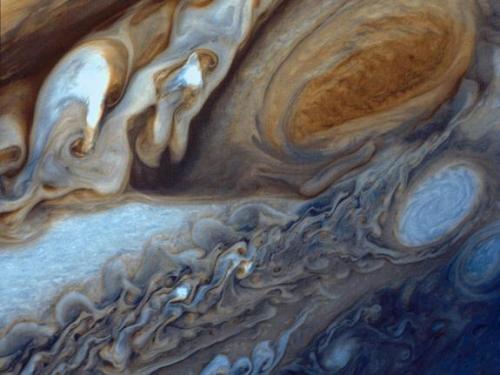
More Posts from Astrotidbits-blog and Others

Explain this to me...
“Quantum cryptography uses the quantum properties of photons to guarantee perfect secrecy. But one of its lesser known limitations is that it only works if Alice and Bob are perfectly aligned so that they can carry out well-defined polarization measurements on the photons as they arrive. Physicists say that Alice and Bob must share the same reference frame. That’s OK if Alice and Bob are in their own ground-based labs, but it’s a problem in many other applications, such as ground-to-satellite communications or even in chip-to-chip communications, because it’s hard to keep chips still over distances of the order of the wavelength of light. Now a group of UK physicists have developed a way of doing quantum cryptography without sharing a reference frame. The trick is to use entangled triplets of photons, so-called qutrits, rather than entangled pairs. This solves the problem by embedding it in an extra abstract dimension, which is independent of space. So, as long as both Alice and Bob know the way in which all these abstract dimensions are related, the third provides a reference against which measurements of the other two can be made. That allows Alice and Bob to make any measurements they need without having to agree ahead of time on a frame of reference. That could be an important advance enabling the widespread use of quantum cryptography.”
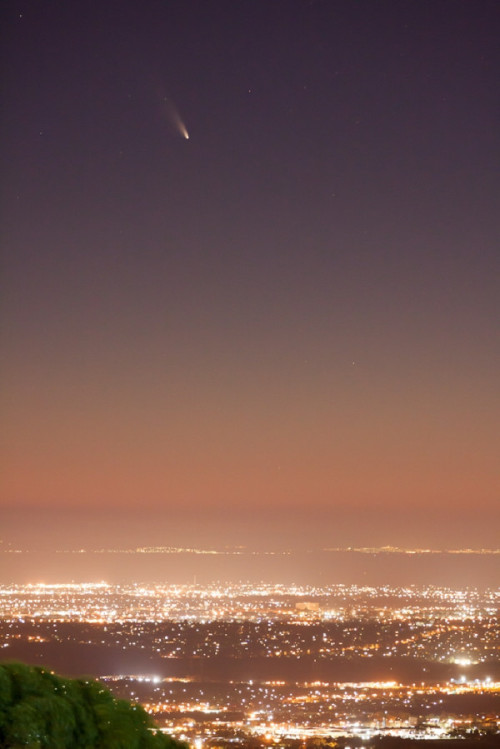
Comet PanSTARRS
Gorgeous picture of Comet PanSTARRS taken by Carl Gruber on March 2, 2013 at a mountain lookout in Melbourne.
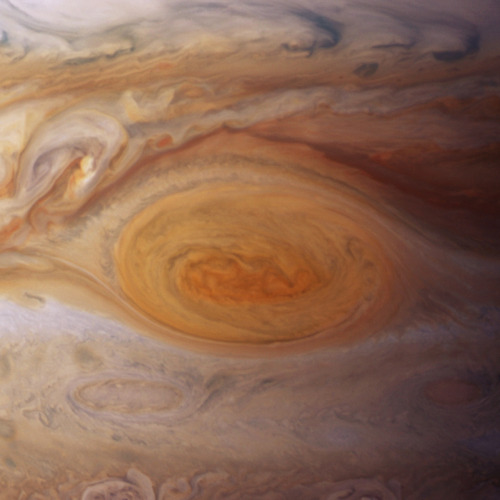

Jupiter’s Great Red Spot is such a crazy, turbulent storm (the largest known storm in the universe) that it creates sound waves that travel hundreds of miles up and actually heat the planet’s upper atmosphere.
I repeat: sound waves are heating Jupiter’s atmosphere. The area above the Spot is a thousand degrees Fahrenheit hotter than the surrounding atmosphere.
Here’s the journal paper. Here’s our story.
Image credit: Space Telescope Science Institute/NASA
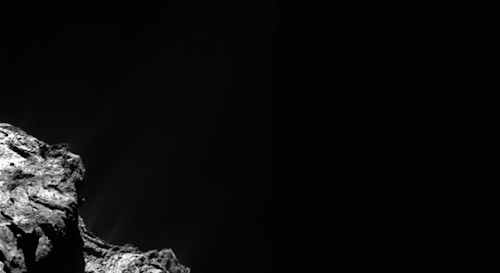
ESA Rosetta has just released this marvelous video clip of 3 images,18 minutes apart, of a spectacular outburst on Comet 67P. This is what happens when comets, in their orbits around the Sun, start getting close enough for the ices they are made of to warm, turn to vapor, and erupt from below the dark, encrusted surface to form a jet, often entraining icy and rocky particles in the process.
It is the growing number and strength of such jets that form as the comet nears the Sun that produce the magnificent tails that can stretch long and mythical across the night skies of Earth.
And here, you are witnessing the process from its beginnings.
Hosanna to Comet 67P!
ESA: Outburst in action

The first Space Launch System hardware from NASA’s Michoud Assembly Facility in New Orleans just arrived at NASA’s Marshall Space Flight Center in Huntsville, Alabama. We take a minute to introduce you to the crew of NASA’s barge Pegasus. The crew made an 18-day journey on the barge leaving New Orleans on April 28 and arriving at Marshall on May 15. The barge delivered a structural test version of the core stage engine section of SLS, NASA’s new heavy-lift rocket. Pegasus will deliver four test articles of the rocket’s core stage to Marshall for tests that will simulate the forces experienced during launch. Pegasus will later ferry the flight-ready core stage to NASA’s Stennis Space Center near Bay St. Louis, Mississippi, for testing and then to NASA’s Kennedy Space Center in Florida for integration of the SLS flight vehicle in the Vehicle Assembly Building.

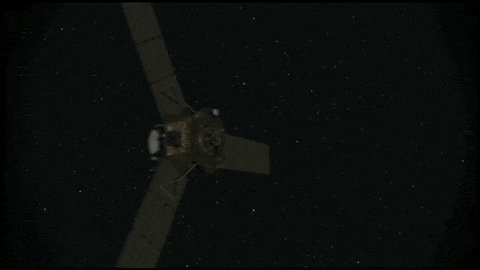
NASA‘s Juno: spacecraft has successfully entered orbit around the gas giant Jupiter.
After five years and 1.7 billion miles the probe accomplish a risky braking manoeuvre in order for it to be hooked by Jupiter’s gravity. NASA’s Jet Propulsion Laboratory, California received the confirmation signal which confirmed Juno had finally entered orbit on July 4. Juno will begin a two-year mission of discovery which will help scientists better understand one of the largest objects in our solar system.
Using Juno’s complex array of cameras and sensors the team hope to answer some long-awaited questions including whether Jupiter actually has a solid core or if it really is just a swirling ball of gas. Another focus will be the Great Red Spot - a massive storm several times the size of Earth that has been raging on the surface of Jupiter for what appears to be hundreds of years. Juno is the fastest spacecraft to ever enter orbit around a planet, travelling at an astonishing 130,000mph by the time it reached the gas giant.
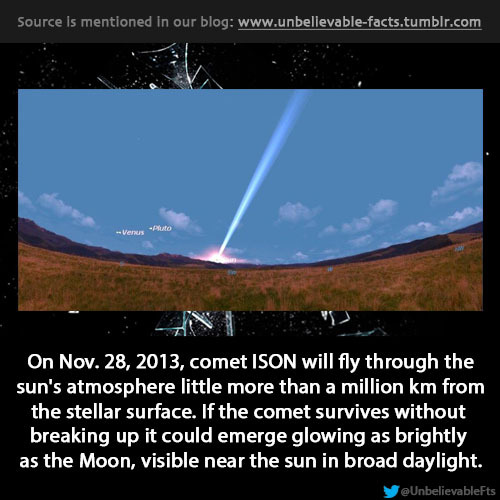
on Nov. 28, 2013, comet ISON will fly through the sun’s atmosphere little more than a million km from the stellar surface. If the comet survives without breaking up it could emerge glowing as brightly as the Moon, visible near the sun in broad daylight.
Kindly share this, so that no one could miss that event!
JPL Engineer explains how they are testing the next generation of Mars parachutes in the video “LDSD: We Brake for Mars”
-
 astrotidbits-blog reblogged this · 8 years ago
astrotidbits-blog reblogged this · 8 years ago -
 astrotidbits-blog liked this · 8 years ago
astrotidbits-blog liked this · 8 years ago -
 roses-are-red-violets-are-d-blog reblogged this · 9 years ago
roses-are-red-violets-are-d-blog reblogged this · 9 years ago -
 cloudninegrapevine-blog liked this · 9 years ago
cloudninegrapevine-blog liked this · 9 years ago -
 0vertired reblogged this · 9 years ago
0vertired reblogged this · 9 years ago -
 acrimoaney reblogged this · 9 years ago
acrimoaney reblogged this · 9 years ago -
 quirkily reblogged this · 9 years ago
quirkily reblogged this · 9 years ago -
 kingwoodruff reblogged this · 9 years ago
kingwoodruff reblogged this · 9 years ago -
 aquariusbee reblogged this · 9 years ago
aquariusbee reblogged this · 9 years ago -
 ladyblueroses reblogged this · 9 years ago
ladyblueroses reblogged this · 9 years ago -
 joanneik reblogged this · 9 years ago
joanneik reblogged this · 9 years ago -
 luminesce-nce reblogged this · 9 years ago
luminesce-nce reblogged this · 9 years ago -
 prettygirlsandpastries liked this · 9 years ago
prettygirlsandpastries liked this · 9 years ago -
 a6teen liked this · 9 years ago
a6teen liked this · 9 years ago -
 velvettine reblogged this · 9 years ago
velvettine reblogged this · 9 years ago -
 velvettine liked this · 9 years ago
velvettine liked this · 9 years ago -
 keep-her-wild reblogged this · 9 years ago
keep-her-wild reblogged this · 9 years ago -
 exhtreme reblogged this · 9 years ago
exhtreme reblogged this · 9 years ago -
 melancholy-ecstasea reblogged this · 9 years ago
melancholy-ecstasea reblogged this · 9 years ago -
 utmostangel reblogged this · 9 years ago
utmostangel reblogged this · 9 years ago -
 cloud2468-blog reblogged this · 9 years ago
cloud2468-blog reblogged this · 9 years ago -
 queenfrieza reblogged this · 9 years ago
queenfrieza reblogged this · 9 years ago -
 shiro-the-wise-wolf liked this · 9 years ago
shiro-the-wise-wolf liked this · 9 years ago -
 littlecuteskulls reblogged this · 9 years ago
littlecuteskulls reblogged this · 9 years ago -
 megaboy335 liked this · 9 years ago
megaboy335 liked this · 9 years ago -
 procyonvulpecula reblogged this · 9 years ago
procyonvulpecula reblogged this · 9 years ago -
 tintinnabulare reblogged this · 9 years ago
tintinnabulare reblogged this · 9 years ago -
 lllearyan liked this · 9 years ago
lllearyan liked this · 9 years ago -
 jupiter-mars-mercury reblogged this · 9 years ago
jupiter-mars-mercury reblogged this · 9 years ago -
 calldisconnected reblogged this · 9 years ago
calldisconnected reblogged this · 9 years ago -
 flora-zebra reblogged this · 9 years ago
flora-zebra reblogged this · 9 years ago -
 canihaveadrag reblogged this · 9 years ago
canihaveadrag reblogged this · 9 years ago -
 yepitserica reblogged this · 9 years ago
yepitserica reblogged this · 9 years ago